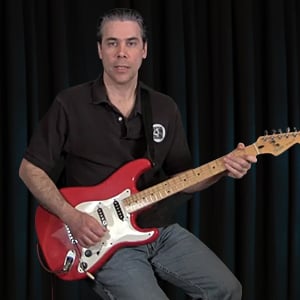Description
In this final set of lessons on the style of master Joe Pass, we're going to learn how to play jazz lead lines. As always, we'll start with an overview of the concepts, then we'll look at using chord tones to solo, then practice chord tones with a backing track. After that we'll use scale tones to solo, also followed by a practice lesson with a backing track. We'll then break down two Joe Pass style lead lines, and follow it up with combining them.
Lesson Info

Instructor
Christopher Schlegel
- Styles:
-
- Difficulty:
-
- Files
- Videos / Score
- Published
